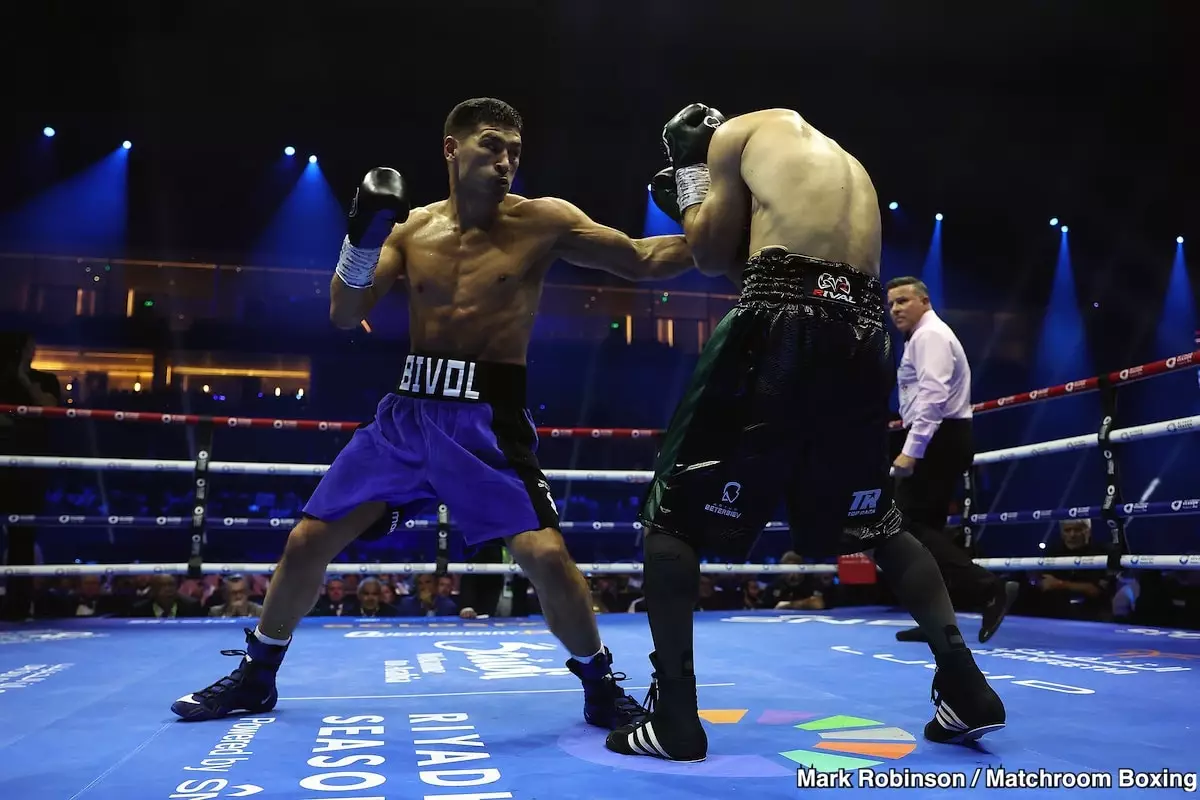Recently, Terence Crawford was spotted sitting alongside Dmitry Bivol, the former WBA light heavyweight champion, during an event dubbed IBF Champions Night. Speculation quickly arose that this encounter was more than mere coincidence; many observers postulated that Crawford sought to extract vital insights from Bivol that could aid him in a potential showdown with the boxing titan, Canelo Alvarez, scheduled for next May. However, such reasoning warrants scrutiny. It is questionable whether Crawford, whose dimensions and fighting style starkly differ from Bivol’s, can effectively gain any strategic advantage from this interaction.
Crawford’s physical attributes—often considered disadvantages against a fighter of Canelo’s caliber—are undeniable. At 41-0 with 31 knockouts, he is certainly a formidable opponent, yet he stands at a height and weight disadvantage compared to Canelo Alvarez, who boasts a more imposing stature at super middleweight. The fundamental differences in their fighting approaches—Crawford’s switching stances and Canelo’s aggressive counter-punching—further complicate the potential effectiveness of strategies gleaned from Bivol. It must be acknowledged that Crawford’s attempt to adapt or emulate Bivol’s methodology could result in a misguided preparation strategy.
Also worth noting are Crawford’s recent options outside of a match against Alvarez. Rumors suggested that Crawford might consider stepping in the ring with rising star Vergil Ortiz Jr. on February 22nd. However, injury sidelined him, driving speculation that this maneuver might be an attempt to evade a challenging confrontation with Ortiz. Given Crawford’s advanced career stage, it is reasonable to posit that he may be seeking to preserve his undefeated record for a potentially high-stakes bout against Canelo, favorably framed. If Canelo’s team is indeed asking for an astronomical sum—reportedly $180 million for a fight with Crawford—this could signal the latter’s strategic retreat rather than a genuine pursuit of boxing glory.
The boxing landscape is unforgiving, especially for fighters like Bivol, who, despite previously triumphing over Canelo in a decisive manner, now appears to be in a state of uncertain relevance following a faltering performance against Artur Beterbiev. Bivol’s inability to answer the bell during later rounds raises concrete questions about his capability to provide Crawford with meaningful advice. After such a loss, Bivol’s insights may be deemed as unreliable, given that he himself recently exhibited signs of vulnerability in the ring.
While Crawford’s strategic approaches may reflect tactical ambitions, they are rife with complications and miscalculations that could hinder his success. The juxtaposition of his desired match against Canelo with the potential of navigating a minefield of injuries, differing styles, and unrealistic financial demands puts Crawford in a precarious position. The boxing community watches closely, not just for the potential match-ups, but also to see whether Crawford can navigate these complexities and emerge triumphantly from this convoluted path. As it stands, the anticipation surrounding a possible bout with Canelo Alvarez remains a tantalizing yet precarious ambition, laden with risks and uncertainties.

